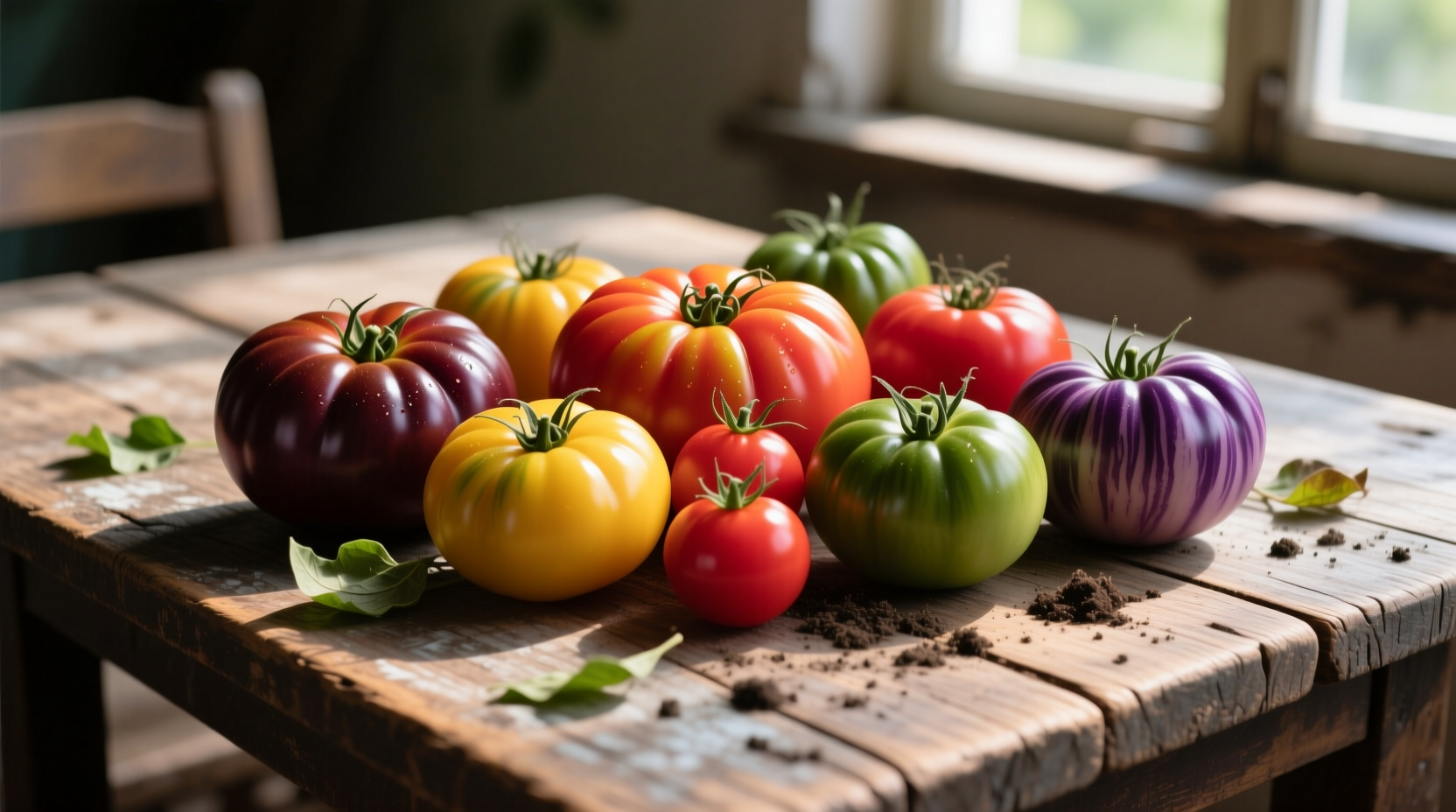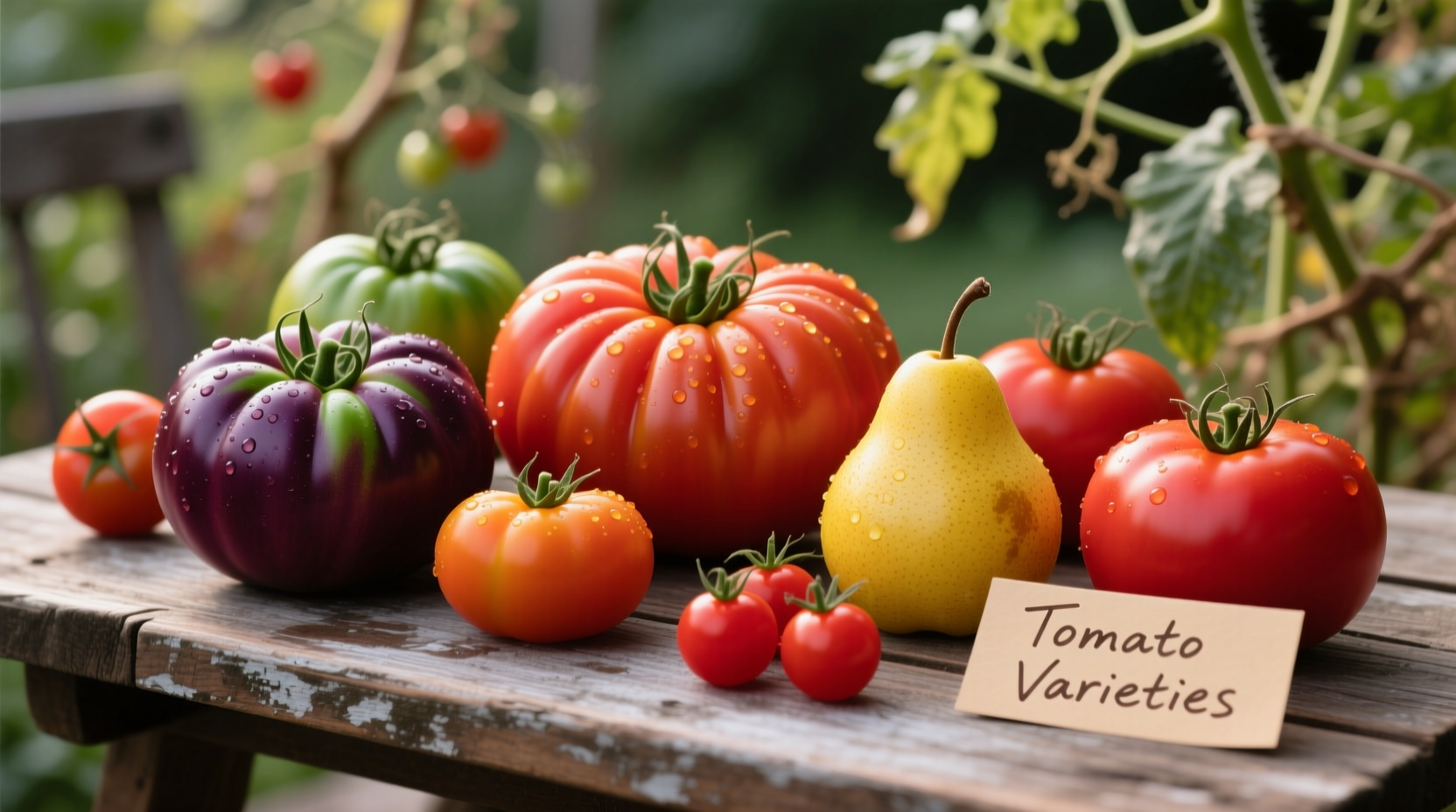Tomatoes aren't just red and round—they represent one of the most diverse cultivated crops with varieties spanning multiple colors, sizes, and flavor profiles. Whether you're planning your garden or selecting produce at the market, knowing the different types of tomato transforms how you use this versatile fruit (yes, botanically a fruit!). This guide breaks down tomato classifications by growth habit, culinary use, and flavor characteristics with practical advice for every application.
Understanding Tomato Classification Systems
Tomatoes are categorized using multiple systems that address different needs. The primary classification divides tomatoes by growth habit into determinate (bush) and indeterminate (vining) varieties. Determinate types grow to a fixed height and produce one main harvest, making them ideal for container gardening and canning. Indeterminate varieties continue growing and producing fruit throughout the season, preferred by gardeners seeking continuous harvests.
Evolution of Tomato Varieties Timeline
- 700-500 BCE: Earliest domestication in Mesoamerica with small, yellow cherry tomatoes
- 1521: Spanish explorers bring tomatoes to Europe from Aztec territories
- 1800s: Development of first named varieties like 'Brandywine' in North America
- 1930s: Introduction of hybrid varieties for disease resistance
- 1970s: Rise of heirloom tomato movement preserving historical varieties
- 2000s: Development of specialty types like 'Campari' and 'Tumbling Tom'
Major Tomato Types and Their Characteristics
When exploring different types of tomatoes for cooking, understanding their primary categories helps match varieties to specific culinary applications. The USDA Agricultural Research Service recognizes over 3,000 documented tomato varieties in their germplasm collection, each with unique properties.
| Tomato Type | Common Varieties | Best Culinary Uses | Flavor Profile |
|---|---|---|---|
| Slicing | Beefsteak, Early Girl, Cherokee Purple | Burgers, sandwiches, fresh salads | Balanced sweet-acidic, juicy |
| Cherry | Super Sweet 100, Sungold, Black Cherry | Snacking, salads, roasting | Intensely sweet, concentrated |
| Paste | San Marzano, Roma, Amish Paste | Sauces, canning, sun-drying | Rich, less watery, meaty texture |
| Heirloom | Brandywine, Green Zebra, Mortgage Lifter | Caprese salads, gourmet dishes | Complex, often floral or fruity notes |
According to research from the University of California Agriculture and Natural Resources, paste tomatoes contain approximately 20% less water content than slicing varieties, making them superior for sauce production without lengthy reduction times. This scientific insight explains why different types of tomatoes for sauce require specific varieties.

Selecting Tomatoes for Specific Applications
Choosing the right tomato involves understanding both your intended use and the tomato's inherent properties. The Cornell University Cooperative Extension notes that lycopene content varies significantly between types, with deeper red varieties containing up to 100% more of this antioxidant than yellow or orange types.
Context Boundaries: When to Use Specific Varieties
- Salads: Medium-sized slicing tomatoes like 'Better Boy' provide the perfect balance of juiciness without overwhelming other ingredients
- Sauces: Plum tomatoes with fewer seed cavities (like 'San Marzano') yield thicker sauces with less cooking time
- Gazpacho: Deep red varieties create vibrant color while yellow tomatoes produce a golden version
- Container Gardening: Determinate varieties like 'Patio Princess' thrive in pots with limited root space
Growing Different Tomato Types Successfully
Gardeners selecting different types of tomatoes for home gardening must consider more than just flavor preferences. The USDA Plant Hardiness Zone Map indicates that indeterminate varieties generally require 70-85 frost-free days, while some determinate types can produce in as few as 50 days—crucial information for short-season climates.
When growing tomatoes, remember these key considerations:
- Spacing requirements: Indeterminate varieties need 24-36 inches between plants while determinates can be spaced 18-24 inches apart
- Support systems: Vining types require staking or caging while bush varieties often need minimal support
- Disease resistance: Look for varieties with VFN designation (resistant to Verticillium wilt, Fusarium wilt, and nematodes)
- Harvest timing: Most tomatoes reach peak flavor when fully vine-ripened, though some paste varieties develop better texture when slightly underripe
Culinary Applications for Tomato Diversity
Professional chefs leverage different types of tomatoes for specific cooking techniques. The concentrated sugars in cherry tomatoes make them ideal for roasting, while the firm flesh of paste tomatoes holds shape during slow cooking. Understanding these nuances transforms ordinary dishes into extraordinary creations.
For optimal results:
- Use high-acid varieties like 'Early Girl' in fresh salsas where brightness cuts through other flavors
- Choose meaty paste tomatoes for stuffed preparations that maintain structure during baking
- Combine multiple varieties in sauces—San Marzanos for body with a touch of cherry tomatoes for sweetness
- Peel thick-skinned varieties like 'Roma' for smooth purees, while thin-skinned types work well unpeeled
Preserving Tomato Diversity
The Slow Food Foundation's Ark of Taste currently lists 37 endangered tomato varieties, highlighting the importance of preserving genetic diversity. Home gardeners play a crucial role in maintaining this biodiversity by growing heirloom varieties and saving seeds. Organizations like the Seed Savers Exchange report that over 90% of historic tomato varieties have disappeared from commercial cultivation, making consumer choices increasingly important for agricultural biodiversity.











 浙公网安备
33010002000092号
浙公网安备
33010002000092号 浙B2-20120091-4
浙B2-20120091-4